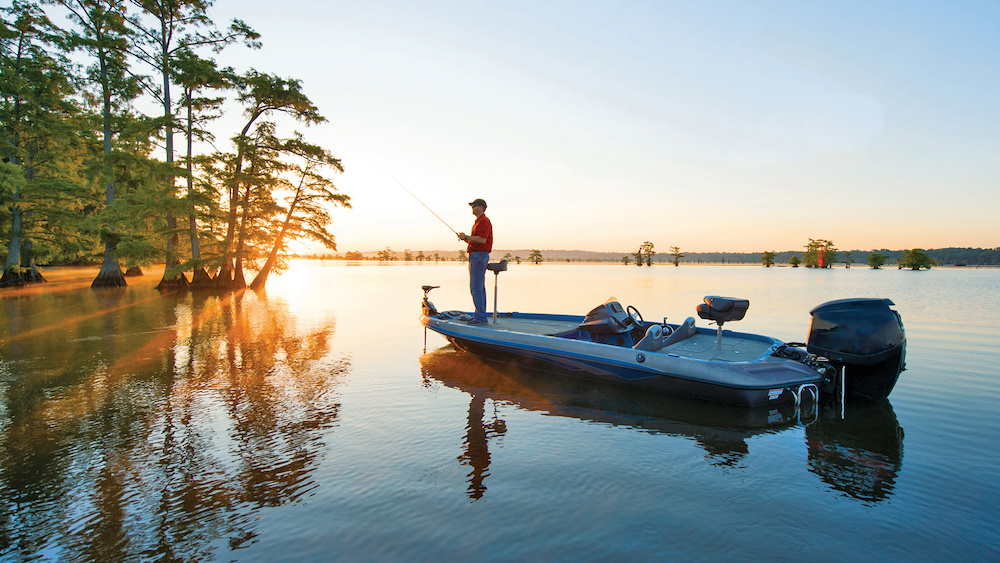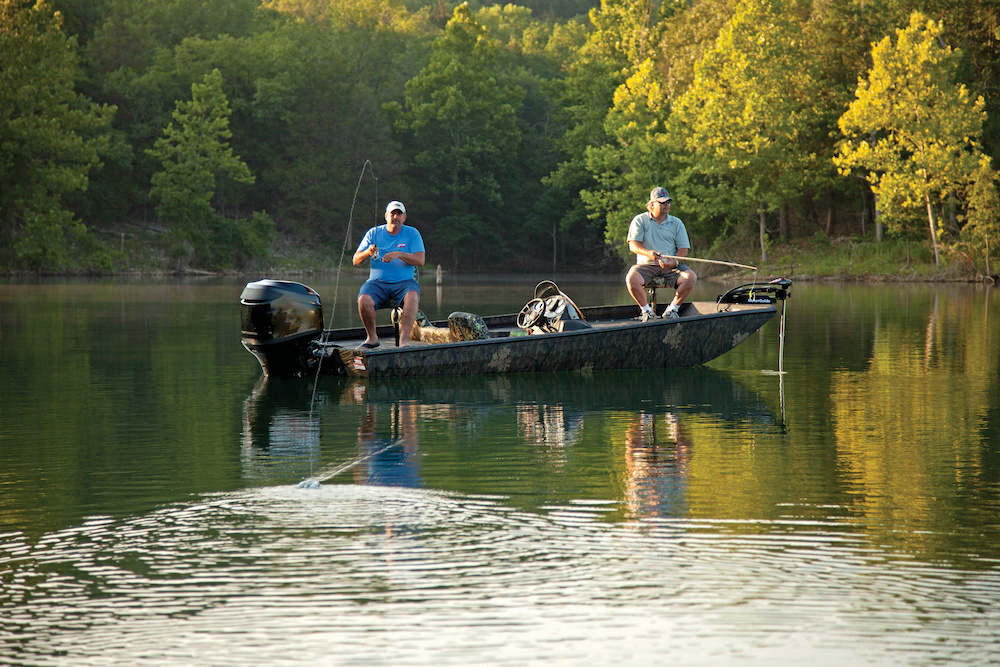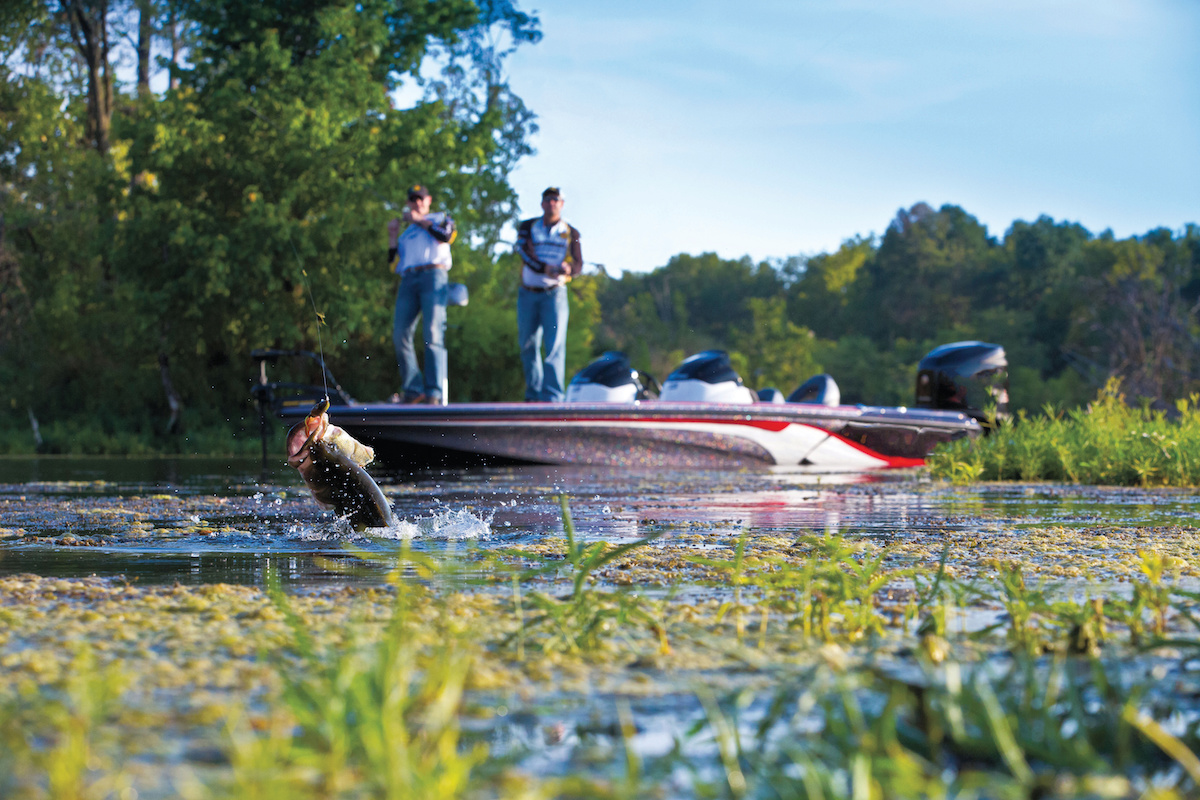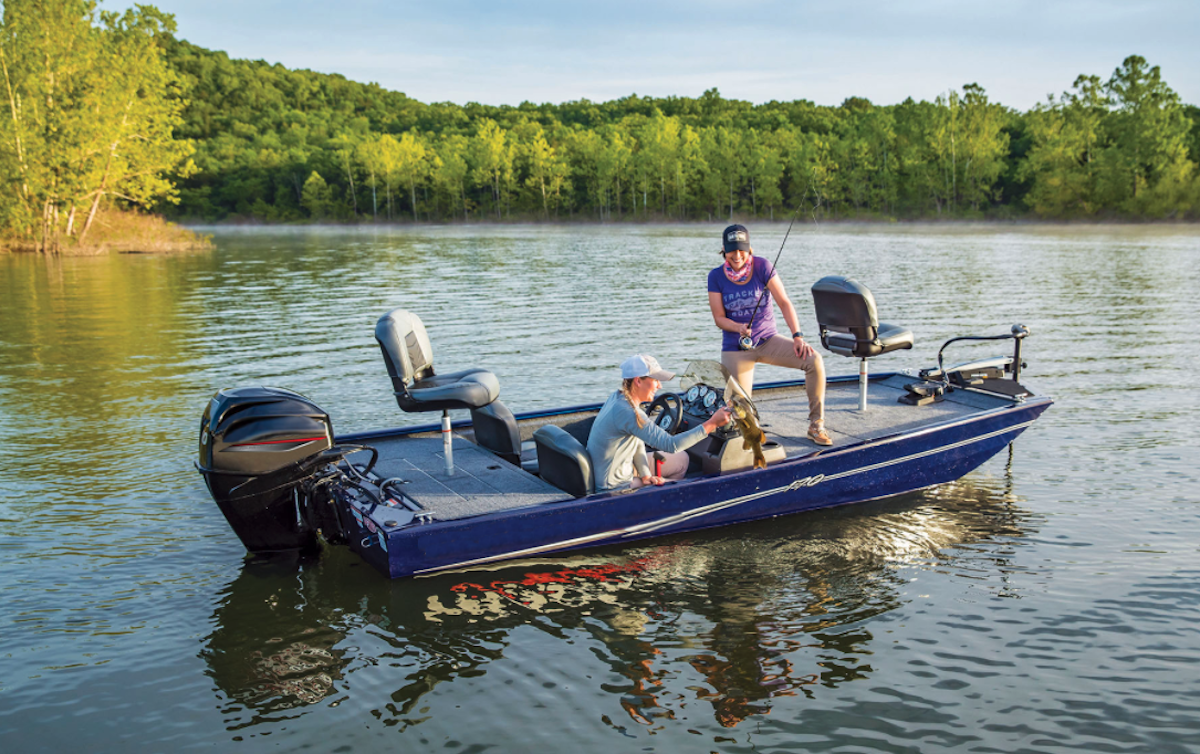You can find plenty of bass fishing tips and all kinds of information about largemouth bass, but in reality there’s just as much misinformation as fact out there. The late Al Houser, former director of the Oklahoma Fisheries Research Lab, made a comment that’s stuck in my head for 30 years. “The problem isn’t that anglers are ignorant,” he lamented, “it’s that they know so many things that just ain’t so.”
Every angler group has its widely held fallacies, perhaps none more than bass anglers. That’s perhaps surprising, given the volume of research directed at largemouth bass. Moreover, superbly skilled professional anglers often offer commentary on fishing and fishery management topics. Yet despite their talents and big winnings, many pro anglers are as guilty as anyone else of clinging to myths. Here’s a selection of firmly held beliefs that just ain’t so.

Myth #1 Bass Become Dormant in Cold Water
When fall approaches we hear how bass fishing will be bountiful, since fish stock up prior to their long winter of inactivity. No doubt fall is a fine time to fish, and big fish do seem more active. But this shift has as much to do with altered habitat and prey movements as with bass seeking their last meal in months.
As poikilothermic animals (which have blood the same temperature as the environment), the metabolic systems of fish adjust to temperature changes to maintain life in the same conditions they’ve evolved in. Members of the sunfish family undergo physiological changes in chemical balances and size of the heart that prepare them for cold. Relative movement of bass declines and digestion slows, but bass bite well in northern waters as lakes approach the freezing point.
Largemouth bass strike lures jigged below a hole in the ice and eat large suckers and shiners set on tip-ups. In northeastern states, many of the biggest bass caught each year come through the ice.
Few North Country anglers target bass on frozen lakes, and that may be a good thing from a conservation standpoint. According to Roger Hugill, Minnesota DNR fishery biologist, a contingent of ice anglers sought to block catch-and-release regulations on a local lake. The reason, they argued, was that winter was the best time to catch the bass they liked to bake, those juicy five-pounders!
Physiological models suggest that at 40 degrees bass need consume only about one third as much food to maintain nutrition as they do at 70 degrees. Prey fish abundance is lowest in winter as well. But bass still eat.
In some systems, particularly rivers, bass tend to be sedentary during winter mostly because critical habitat is limited at that time. In lakes and reservoirs, however, underwater cameras show bass cruising along shallow and deep, often approaching the camera for a better look.
Myth #2: Bass Strike Red Hooks Because They Resemble Blood
Manufacturers have rushed to capitalize on this myth by offering lures with red hooks, red sinkers and blades, red line, even red reel spools. I’ve heard pros state in seminars that red hooks or a red highlight can attract extra bites by simulating the blood of a baitfish, gills, or perhaps a crawfish.
Studies of bass vision indicate they detect red easily and can discriminate among shades. No research shows, however, any instinctive attraction to it. Anglers might reason that blood is red, bleeding baitfish are vulnerable to attack, so fish should attack objects with red markings. But bass don’t think like that. They lack the neurological processes to come to any conclusion.
Bass are capable of quickly learning to bite what brings a reward, ignore what brings no benefit, and avoid dangerous stimuli. But the idea that bass can associate reddish markings on baitfish with red on artificial lures is far-fetched, according to what we know about their learning process.
Myth #3: A Bass is a Bass
While most knowledgeable anglers recognize the differences in behavior, habitat, and prey choice between largemouth and smallmouth bass, many accept the adage that largemouth bass behave similarly everywhere you find them.
This phrase may boost an angler’s confidence when fishing a new body of water but is biologically groundless. The largemouth is generally considered a single species divided into two subspecies, Florida and northern largemouth. But further genetic studies show variation in the DNA of fish even from nearby watersheds within the same state. And differences in diet, water color, and cover type also make bass from different lakes behave differently.
In some, topwater lures work all summer while they produce little in other lakes. Night-fishing is fine some places and a waste of time elsewhere. Lure color preferences can be pronounced as well, and feeding and spawning behavior can also vary.
Local experts and guides are tuned to bass behavior and can teach visitors their tricks. For this reason, tournament anglers often hire a guide or consult renowned locals when researching for an upcoming tournament.
Myth #4: Modern Livewells Make Fish Care Easy
Gene Gilliland is a veteran bass biologist at the Oklahoma Fishery Research Lab in Norman, an epicenter of U.S. bassin’ fervor. Moreover, he’s an accomplished tournament fisherman and fishing industry analyst. For decades he’s been trying to teach tournament anglers to take better care of their catch.
Too bad so many avid bassers don’t like to read, and have for years failed to heed valuable advice that promises to add bonus ounces to tournament tallies and at the same time save bass from delayed mortality. “When I give seminars on this topic,” Gilliland says, “I still get the comment, ‘Well, how am I supposed to know how much air a bass needs?’ Too many anglers simply put their catch in a livewell, turn the switch to auto, and forget about them until weigh-in time. While that amount of aeration may be sufficient for a modest catch in cool water, limits of bass weighing in the teens are oxygen-deprived in 80 degree or warmer water. Anglers need to take measures to improve conditions. Run aerators constantly; add fresh water; add ice to lower livewell temperatures; or run pure oxygen into the well.”
While today’s bass boats are longer and heavier than those of the past, many models have not substantially increased livewell volume. Some manufacturers are to be commended, however, for taking fish care seriously, sacrificing a bit of storage and adding aeration features that work.
Myth #5: You Need a Big, Fast Boat to Fish Efficiently
Boat manufacturers and the pro anglers they sponsor sometimes seem to imply that the craft makes the angler. In fact, it is the angler’s craft, as in being crafty, rather than boat choice that prevails. As in past times, many of the best bass fishermen still use small, underpowered boats.
Small boats are suited to small waters where giant bass dwell, from Florida to Iowa to California. Full-sized bass boats can’t get into key shallow zones and have trouble maneuvering through dense timber or vegetation. When they do, the commotion often spooks lunkers.
Even on large waters, small, slow boats force anglers to slow down and concentrate on the fish and its environment, always a boon to good catching. Witness the many huge bass taken by shore-bound anglers up to their elbows in the bass’ environment.
Big, fast boats are way cool and mighty comfortable, allowing us to haul untold hundreds of bass baits, few of which get used in a year, let alone in a day. Even in tournament competition, I know anglers who always score high, yet fish from small boats that make them the last guy to a given spot.

Myth #6: Tournaments Harm Bass Populations
Despite booming bass fisheries in recent decades, this myth refuses to die. Anglers and managers opposed to tournaments, for one reason or another, propagate the idea that excessive mortality hurts fishing quality. In defense of competition, one need only check the weights caught at waters fished incessantly by tournament competitors for decades—Grand Lake, Oklahoma; Kentucky Lake, Kentucky; Lake Seminole, Georgia-Alabama; Lake Minnetonka, Minnesota; and Sam Rayburn, Texas, to name but a few. Catches today typically are as good as they’ve ever been.
Rayburn hosts more than 300 tournaments a year and has done so for decades. More than half the anglers there participate in tournaments, according to a recent analysis by biologists with Texas Parks and Wildlife Department.* That tagging study found tournament mortality contributed from one to 16 percent of total annual mortality of the largemouth population, while non-tournament catch-and-release fishing were two to 17 percent of the total, and angler harvest (non-tournament) comprised 16 to 38 percent of annual bass mortality.
Fishing pressure doubtless makes bass harder to catch, but blame cannot be placed solely on competitive anglers. All who wield a rod contribute. Social issues have always been with us, and we can only hope that etiquette, fair play, and sportsmanship prevail on the water.
Myth #7: Bass Abandon Areas Treated with Herbicides
I’m generally as opposed to herbicide treatments as the next avid basser. I’ve seen habitat damage from chemical applications and am concerned about disease breakouts. But in some situations, treatments may be necessary for navigation and recreation, and even for the health of bass populations. Excessively thick plant growth limits bass feeding and cuts the abundance of key prey fish like shad.
Scientific evidence suggests that bass are not negatively affected by correct application of herbicides. Nearly 20 years ago, Dr. Mark Bain and Suzanne Boltz of Auburn University tracked largemouth bass as herbicides were applied to their home areas on Lake Guntersville in Alabama.** Fish didn’t evacuate as the chemicals were applied or as plants dwindled, and collections of bass in treated and untreated areas were similar.
Recently, other Auburn researchers studied the reaction of bass to plant reduction by herbicides at another waterway where treatments have been controversial, Lake Seminole on the Georgia-Florida border. The Corps of Engineers treated the Spring Creek arm with fluridone at six parts per billion, which reduces hydrilla but is tolerated by most native plants. There, treatments didn’t change bass behavior in the short term but, as plants dwindled, bass moved into deeper water and switched habitat from hydrilla flats to standing timber.
Removal of hydrilla in smaller, shallower coves in another creek arm had contrasting results. Instead of moving deeper, bass moved shallower into floating and emergent vegetation that represented the best habitat once hydrilla dwindled. In both cases, however, changes in fishing strategy would be required to maintain catch rates. During summer, stable environments typically offer the most consistent fishing, and habitat changes may temporarily reduce catchability.
In a final experiment, the scientists applied herbicide directly on nesting bass and water onto others, as a control. Bass didn’t abandon nests, and reproduction in treated areas was similar to that in untreated ones.
Vegetation removal should be viewed as a last resort by lake managers, but careful treatments in limited areas should not harm bass fisheries.
Myth #8: Big Baits Catch Big Bass
This myth isn’t a complete fallacy. You can increase the average size of bass caught by using larger lures. But there’s far more to the relationship. Largemouth bass are an appropriately named fish. Endowed with a capacious maw, they eat anything they can catch and engulf—bats, rats, snakes, turtles, clams, birds, and amphibians, plus all sorts of invertebrates and fish.
Scientists have calculated the sizes of prey that bass consume. For narrow-bodied, soft-finned prey like shad or trout, bass may eat items up to half their own length. Wide-bodied, finny prey are selected at smaller sizes.
According to this formula, a thin, six-inch baitfish is fair game for a keeper-sized bass. And a 24-inch lunker shouldn’t shy from a foot-long prey-fish or a swimbait of similar dimensions. So, if you heave an eight-inch bait weighing a couple ounces, lunkers aren’t guaranteed, but don’t be surprised by the 16-inch bass attacking them.
The key to catching big bass with big baits is placing them in a vulnerable position where big bass live and hunt. Long, main-lake points, interfaces of deep water and offshore vertical structure, and deep weedlines are a few examples.
Researchers at the University of Arizona, curious about bass found choking on tilapia, conducted experiments to test bass choices. Adult bass were offered green sunfish, redear sunfish, and tilapia with body depths around and beyond the maximum size vulnerable to attack, according to calculations. Bass pursued and attacked prey larger than predicted, often choking on them. This result helps explain why at times miniature bass attack topwater luress, worms, and floating minnowbaits almost their own length.
At the other extreme, adult bass eat items as small as nearly microscopic water fleas (Daphnia), even subsisting on them for months when larger prey are scarce. Field Editor Ned Kehde is a finesse tactician, often found on Kansas’ hard-fished public impoundments wielding a 1/16- or even 1/32-ounce jighead with a 2 1⁄2-inch portion of a Strike King Zero. He likes action and often tallies dozens of bass in a short outing. But he regularly accounts for bass from three to nearly six pounds on these tiny offerings.
Myth #9: Catching Nesting Bass is like Picking Cherries
Some anglers look down on sight-fishing for bedding bass as unsporting and unethical, in that it takes advantage of bass at their most vulnerable moments. Rather, it’s a feast-or-famine approach to fishing that’s part of angling tradition in many areas. Catching a bedding bass can be easy, or it can be so difficult as to approach impossibility.
I hear bass pros rue the fact that they spent several hours trying to tempt a bedding lunker to bite, in the end failing and returning to weigh-in without a limit. In-Fisherman Editor In Chief Doug Stange once spent the better part of an afternoon with Florida guide Gene Holbrook trying to catch a big bass Holbrook had found after three days of searching. The lunker nipped baits, temporarily abandoned the nest, and frustrated them for hours, until a change of lures finally turned the trick on the 11-pounder.
Sight-fishing is an art, and skilled anglers can read the behavior of a particular bass and determine the likelihood of its capture. It takes years of practice, plus powers of observation, patience, and gamesmanship to do it well. On the other hand, some bass, particularly in lightly fished waters, may swim off a bed to eat nearly any bait tossed their way. So, when it comes to sight-fishing, if you don’t like it, then don’t do it.
Myth #10: Stocking Florida Bass Improves Lunker Catches
When stocked into semi-tropical environments, Florida bass tend to increase the maximum size of bass there. Consider the cases of California and Texas. Anglers elsewhere have clamored for similar introductions, failing to appreciate the frailty of these giants in habitats not suited to them.
Florida bass evolved in the central and southern part of that state and are adapted to conditions there. Outside this native range, cool water (below about 50 degrees for extended periods) limits their spawning, slows growth below that of native bass, and causes high mortality.
Since Florida bass frequently spawn with native fish, genetic mixing in subsequent generations is detrimental to the fitness of the natural population. Geneticists caution against introducing non-native stocks of largemouth bass and other species without extensive review of threats.
Bass myths often contain a kernel of truth. But when extrapolated to the larger bass-fishing scene, these adages restrict the free thinking that’s important to successful fishing.
*Driscoll, M. T., J. L. Smith, and R. A. Myers. 2007. Impact of tournaments on the largemouth bass population at Sam Rayburn Reservoir, Texas. N. Am. J. Fish. Mgmt. 27:425-433.
**Bain, M. B., and S. E. Boltz., 1992. Effect of aquatic plant control on the microdistribution and population characteristics of largemouth bass. Trans. Am. Fish. Soc. 121: 94-103.
More Myths
Planting Brushpiles Increases Bass Populations
In most cases, brush and other attractors concentrate bass but do little to enhance reproduction, lake-wide biomass, or growth. As a result, some fishery managers are reluctant to encourage their use, feeling that bass exploitation may rise if catch-and-release rates are low. Attractors can improve habitat by increasing the surface area available for invertebrates that feed small fish, but effects are local, not population-wide.
Big Bass Live in Deep Water
Big bass live where living conditions and prey availability support their bulk. That can be shallow, deep, or in between, depending on available habitat and prey type. In northern lakes, many of the biggest bass of summer are caught underneath boat docks in a couple of feet of water, or within lily-pad beds of similar depth.
Tracking studies have shown that some big bass hold on deep structure during the day but move into the 10-foot zone to feed after dark. In deep, clear lakes, lunkers may hold in open water, but they’re often suspended at levels where baitfish are most available.
Bass Seek Crayfish in Spring for Nutrition Benefits
Crayfish are a favorite bass food wherever they’re found, and in some cases spring consumption exceeds that of summer. Crayfish are rather poor food, however, from the standpoint of nutrition. They require substantial handling time, both to subdue the clawed critter and to extract the edible portion from its chitinous shell, which amounts to about a third of its total mass. Low fat content and caloric value also make craws less nutritious than most fish. But they’re easy to find and catch, particularly in spring when weed growth is thin. In summer, craws find shelter in dense weed beds that shield them from bass predation.
Editor's Note: This article was created in collaboration with Steve Quinn, and shared with permission from In-Fisherman Magazine. This article was originally published in June 2017 and updated in September 2019 by Lenny Rudow.

